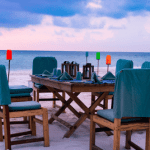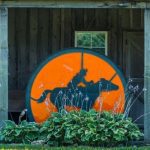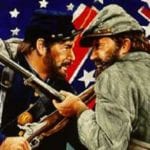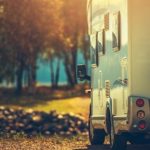 Music
Music  Music
Music  History
History 10 Less Than Jolly Events That Occurred on December 25
 Weird Stuff
Weird Stuff 10 Funny Ways That Researchers Overthink Christmas
 Politics
Politics 10 Political Scandals That Sent Crowds Into the Streets
 Weird Stuff
Weird Stuff Ten Bizarre Facts About The Doge Meme
 Our World
Our World 10 Ways Your Christmas Tree Is More Lit Than You Think
 Movies and TV
Movies and TV The 10 Coolest Stars to Set Sail on The Love Boat
 History
History 10 Things You Didn’t Know About the American National Anthem
 Technology
Technology Top 10 Everyday Tech Buzzwords That Hide a Darker Past
 Humans
Humans 10 Everyday Human Behaviors That Are Actually Survival Instincts
 Music
Music 10 Surprising Origin Stories of Your Favorite Holiday Songs
 History
History 10 Less Than Jolly Events That Occurred on December 25
 Weird Stuff
Weird Stuff 10 Funny Ways That Researchers Overthink Christmas
Who's Behind Listverse?

Jamie Frater
Head Editor
Jamie founded Listverse due to an insatiable desire to share fascinating, obscure, and bizarre facts. He has been a guest speaker on numerous national radio and television stations and is a five time published author.
More About Us Politics
Politics 10 Political Scandals That Sent Crowds Into the Streets
 Weird Stuff
Weird Stuff Ten Bizarre Facts About The Doge Meme
 Our World
Our World 10 Ways Your Christmas Tree Is More Lit Than You Think
 Movies and TV
Movies and TV The 10 Coolest Stars to Set Sail on The Love Boat
 History
History 10 Things You Didn’t Know About the American National Anthem
 Technology
Technology Top 10 Everyday Tech Buzzwords That Hide a Darker Past
 Humans
Humans 10 Everyday Human Behaviors That Are Actually Survival Instincts
10 Brutal Facts about Traveling West in a Covered Wagon
If you’re of a certain age, you grew up playing The Oregon Trail” on primitive computers at school and at home. And if you’re a bit older than that, you grew up watching shows about the Old West. In both generations, though, there was one constant: covered wagons! For decades now, Americans have been obsessed with the land rush that took the nation west throughout the 19th century. There are many parts of that century of Manifest Destiny that are fascinating, like cowboys, outlaws, and gold rushes. And there are also covered wagons.
Covered wagons were the only way to go west until the Transcontinental Railroad was completed in 1869. There were no airplanes to soar over “flyover country,” and ships took forever to sail around the southern tip of South America with no Panama Canal in use. So, if you wanted to move west to California or points closer, you had to saddle up the horses, yoke up the oxen, and prepare for a long, brutal journey through the middle of the country.
In this list, we’ll take a look at ten surprising facts about what it was really like to travel in a covered wagon. The trips were rough in all senses of the word: physically, psychologically, emotionally, financially, and in the time commitment it took to trek across inhospitable terrain. Get ready for a wild look into how tough it was to trek through the Wild West!
Related: Twelve Ways People Spent Their Free Time in the Old West
10 Months of Misery
Covered wagons moved very, very slowly. The average covered wagon in the Old West made it anywhere from 8-20 miles (13-32 kilometers) per day. On flat terrain and in good conditions, those 20-mile days could really help push the pace. But across more mountainous terrain, in dangerous zones, or while dealing with difficult weather, the speed of the average covered wagon bogged down to a literal crawl.
Let’s say you wanted to reach San Francisco. The then-frontier town of St. Louis, Missouri, was a fairly typical starting point. And as the crow flies, it’s roughly 1,750 miles (2,81 kilometers) from St. Louis to San Francisco. Let’s do a little quick math here… and we’ve got it! If your covered wagon made it 20 miles per day for 1,750 miles, it’d take you nearly 90 days to reach San Francisco. Of course, there would be plenty of days when the wagon didn’t make it anywhere near the 20-mile goal. And the actual route to San Francisco wasn’t a straight line, adding plenty more miles to the journey, too.
All told, it took travelers as much as six months of their lives to reach west coast destinations once they set out in covered wagons. As you’d expect, plenty of people got injured, got sick, and even died on the trek. The ones who made it were lucky—and they had lots to catch up on at their destination after giving up months for one of the most arduous things they’d ever do.[1]
9 Pick Your Poison
When it came time to travel across the country, pioneers basically had their choice from one of two kinds of wagon. The prairie schooner was the classic style that we all know—thanks to the Oregon Trail computer game, in part. It was covered with large, circular hoops that ran down the length of the wagon. Families would install a canvas around the hoops, offering shade for the inside. Then, in that shady tunnel, they stored all their earthly belongings as they traveled west.
In that way, it was like that era’s minivan. These wagons were called prairie schooners because from far away, their canvas tops looked like schooner ships to observers watching them push across the Great Plains. Families could take it all the way to the coast (if they made it that far, of course), bumping and stumbling along the way.
The second option was the famous Conestoga wagon. These were pulled by a team of up to six horses at a time. They were much larger, heavier, and more unwieldy, too, so they couldn’t be taken cross-country. They were more often used to travel short distances. For example, settlers who left cities like St. Louis and journeyed to Kansas and Oklahoma Territories found great success with the Conestoga wagon.
Pretty much all the wagons were difficult to work with, though. There were no paved roads back on the open plains at that time. And the rough weather often made paths pioneers used to traverse even more difficult. Wagon wheels regularly broke, oxen and horses regularly passed out or worse, and it was common for wagon trains to break down, get stuck in the mud, or splinter during difficult parts of the trip.[2]
8 Sleep under the Stars
You might think that pioneer families camped out inside their wagons when it came time to go to sleep every night. After all, the prairie schooners were covered by that canvas shell, and it would be perfect to sleep in, wouldn’t it? Not exactly. See, pioneer families had to fit absolutely everything they owned in those schooners. And the canvas-covered luggage hold was actually extremely small. In most cases, prairie schooners only measured about 4 feet (1.2 meters) wide and 9-10 feet (2.7-3 meters) long. That combination wouldn’t fit many sleepers if it were a bunk on its own—and since it was filled to the brim with stuff, it wasn’t going to fit anybody.
Because of that, families were forced to sleep outside under the stars. They could put up tent poles depending on where they rested for the night, but they were out in the open and vulnerable to the elements. If the weather got bad, they had to huddle together under their makeshift tent—or sleep right on the hard ground underneath the wagon. Just thinking about that sleep situation makes our lower back seize up in terror![3]
7 Slow Fast Food
While families may have (usually) traveled west in either the prairie schooner or the Conestoga wagon, they still needed to eat along the way. And those two main styles of wagon weren’t equipped with food that was readily available to pull out and dine on for dinner each night. Everything stuffed in the traveling wagon was more or less wrapped up, stacked on top of each other, and stuck inside until it was finally time to settle in their new land. So families needed to have another smaller wagon on the trail with them in order to eat.
Enter the chuck wagon. For most American pioneers moving west, the average chuck wagon was about the same size as the average prairie schooner, but it was built quite a bit differently. It had a water barrel attached to the outside of it, and many chuck wagons had some type of coffee mill where travelers could grind up beans and get themselves a pick-me-up drink when things got arduous.
In addition, the middle of the chuck wagon had what was called the “possum belly.” Suspended underneath the wagon, this belly was used to carry cow chips and firewood. Then, when it came time to set up camp every night, the chuck wagon was the center of attention for the settlers as they crowded around to make food, eat, and drink.[4]
6 No Horse Culture Here
Plains culture was horse culture—at least, that’s how we remember it now. Many Native American tribes had young soldiers who became incredibly proficient at horseback riding, roping, and waging war on the magnificent beasts after the horse was first introduced to the land. American soldiers and explorers employed horses with great effect on the Great Plains, too. But there was one group of people who really didn’t have access to horses: settlers.
Horses were expensive then, just as they are now, both to purchase in the first place and to maintain with proper food and care. Most settlers traveling west simply didn’t have the funds for that. And the money they did have was tied up in getting together all they needed to make the life-changing (and life-risking) journey. So, instead of saving up to buy a horse, settlers went across the plains without them.
Instead, they brought either mules or oxen along. Both were cheaper, easier to keep healthy, more durable, and more useful than horses. The mules and oxen were used to physically pull the wagon across the grasslands and through the mountains. Then, at their destination, settlers put the mules and oxen to work as farm animals. Horses simply weren’t part of that equation.[5]
5 Rain, Rain, Go Away
Inclement weather was a real problem along the trails of the west. As we’ve already learned, the prairie schooners that traipsed along these paths were covered with a canvas top. The top itself wasn’t weathered for inclement things like rain and snow, though, and settlers had to put in quite a bit of work to get them road-worthy before they set off on their route. The canvas started as a ten-ounce object typically made out of cotton duck fabric. Then, settlers would coat their canvas with linseed oil. That made the canvas (mostly) waterproof. Then, it was draped over the wagon and tied down to keep the family’s possessions dry and safe.
But that wasn’t enough when the weather got really bad. Rain doesn’t just fall straight down, of course. Winds out on the prairies blow endlessly, so settler families were very often forced to deal with its effects, too. Rain would fall sideways during violent storms, and when it wasn’t cloudy, wind would often blow sand and dirt all over the place. So, before casting off along the trail, settlers would carefully string in a drawstring at the ends of the wagon’s canvas. That ensured that they could pull it tightly closed if the weather got really bad—essentially just like a gigantic hoodie that we wear in the modern age.[6]
4 Pack Carefully!
Not only were trails west obviously not paved but there was no suspension to speak of on the wagons that made the trip. Prairie schooners offered families an extremely top-heavy, turbulent journey. Wooden wheels and axles ensured that wagons bounced around for hours, then days, then weeks on end. Even worse, these schooners were so narrow and tall that they were top-heavy, pretty much no matter how they were stocked. Settlers would try to fill in their heaviest possessions on the bottom of the wagon’s bed before stacking lighter things above it. Still, the best-laid plans didn’t always result in an easy journey.
Amazingly, the top-heavy prairie schooners were somehow less difficult to work with than Conestoga wagons. The latter were much wider, larger, and longer, and their size thus made them far more prone to tip over and run off the trail. Many sections of most trails west were too narrow for Conestoga wagon wheels to easily fit into the grooves of the path, too, which ensured riders would bump around in nearly-unbearable turbulence all day, every day.
Of course, the option to avoid all that was pretty simple: many family members chose to walk alongside the wagon. But walking meant spending an entire journey of hundreds (or thousands) of miles on foot just to avoid the bumpy wagon trip. Walking that many miles for weeks on end wasn’t exactly ideal, either.[7]
3 Bring Gear for a Breakdown
Not only was the road not paved back in the day, but there were also no roadside mechanics who could come to help in a pinch. If a covered wagon broke down, AAA wasn’t on hand, and tow trucks weren’t a thing. Settlers had to fix their own wagons with whatever they had at their disposal. That meant bringing the tools of the trade with them—or trying to find wood out in the middle of the wilderness that could be poked and prodded into being usable for the rest of the journey.
Parts broke off wagons all the time, including wooden wheels that were known to split and snap on treacherous terrain. Metal parts broke off, too, be it axles or anything else that would wear down or fall off on the rough run. The problem wasn’t the breaking down, though; the real problem was the fixing. Knowing that they would run into some trouble along the way, settler families had to plan ahead and bring all kinds of tools and extra parts with them on the trip.
When things cracked and busted apart, families had to stop traveling and start painstaking repairs—sometimes in dangerous country. But here’s the worst part: to complete most repairs under their covered wagons, settlers usually had to remove everything from the back and flip it over on its side. That alone was a task of drudgery and toil.[8]
2 Rough River Runs
At some point in their journey, settlers would come to a stream or river. No matter where they were going, and even though the west was far drier than many locales in the south and east, river crossings were sadly inevitable along the route. We say “sadly” and “inevitable” because they were brutally hard on the families themselves, their mules and oxen teams, and the wagons they were dragging along the way.
At larger rivers, there were often ferries that would bring covered wagons across—for a fee, of course. But most of the rivers these migrants encountered didn’t have ferry access. So it came down to fording things as best they could on their own. At smaller rivers, settlers were forced to build their own makeshift ferry out of spare parts they acquired along the way. If they were lucky, trees would line the river, and they could chop wood and lash together their own floating ferry. The tricky part was finding the right crossing point. They had to figure out where the river was the most narrow, and the water was running along the most calmly.
When they figured that out, they would treat their wagon beds with wax and seal up all the cracks they possibly could. When done right, the wagon bed became something of its own boat, perched precariously along the water as the oxen teams pushed forward into the current. If all went well, everybody made it to the other side. If it didn’t, catastrophe could quickly ensue.[9]
1 And Yet They Pushed On
It’s a testament to the willpower and determination of the settlers that they pushed on through all the obstacles and challenges. The promise of being able to homestead with a new, better life than before rang true for many. Families with older grandparents, young children, and everyone in between set out to live a new life and take new chances. With them, they brought the country west, propelling the United States into a new, completely different era. A way of life ended as those covered wagons crossed the prairies, as Native Americans were cordoned off and pushed into a totally different—and often very tragic—new normal.
With it came what the Americans soon knew as “manifest destiny.” The west was eventually opened up all the way clear to California and the Pacific Ocean. Soon, industry and technology both improved enough to produce things like the Transcontinental Railroad. By the latter half of the 19th century, Americans could finally travel from coast to coast with relative ease. The settlers who rode across in covered wagons quite literally pioneered the way, though, even though their trips were back-breakingly hard and often deadly dangerous.[10]








